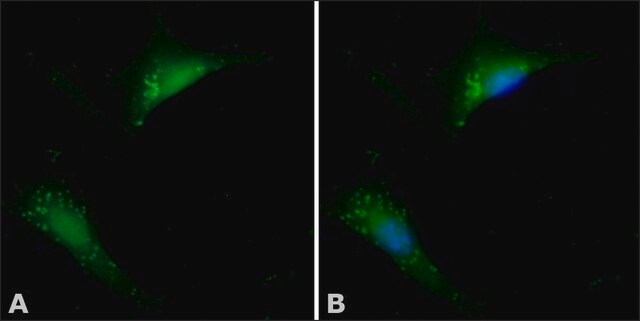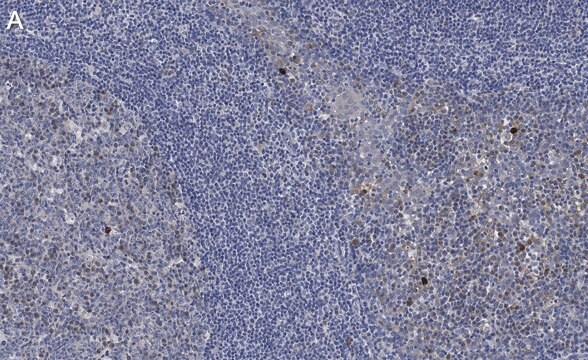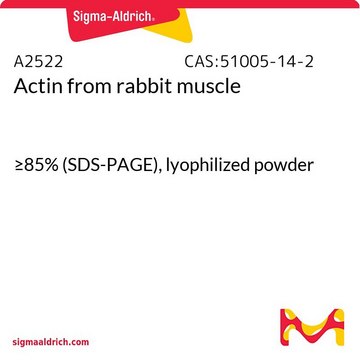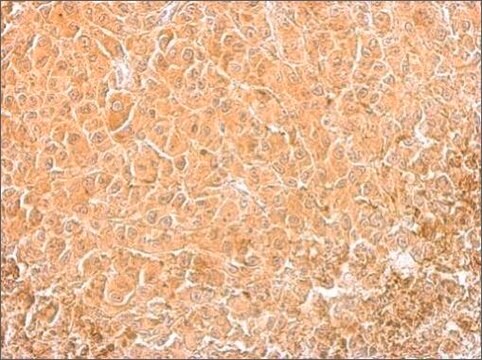C8992
Monoclonal Ant-phospho-Cofilin (pSer3) antibody produced in rabbit
IgG fraction of antiserum, buffered aqueous solution
Sinónimos:
Anti-18 kDa phosphoprotein, Anti-CFL1, Anti-Cofilin 1 (non-muscle), Anti-p18
About This Item
Productos recomendados
biological source
rabbit
Quality Level
conjugate
unconjugated
antibody form
IgG fraction of antiserum
antibody product type
primary antibodies
clone
polyclonal
form
buffered aqueous solution
mol wt
antigen ~19 kDa
species reactivity
mouse, human, pig (predicted), rat (predicted)
technique(s)
western blot: 1:2,000-1:4,000 using whole extracts of HeLa human epithelioid carcinoma and mouse NIH3T3 cells
UniProt accession no.
shipped in
dry ice
storage temp.
−20°C
target post-translational modification
phosphorylation (pSer3)
Gene Information
human ... CFL1(1072)
mouse ... Cfl1(12631)
rat ... Cfl1(29271)
General description
Immunogen
Application
- as primary antibody for immunoblottingto to study the role of the Rac1 GTPase.
- for western blot analysis in a comparative study of signals induced by integrin ligation during cell attachment, mechanical force from intracellular contraction, or cell stretching by external force.
- as primary antibody for western blotting in a study to detect the level of cofilin.
Biochem/physiol Actions
Physical form
Disclaimer
¿No encuentra el producto adecuado?
Pruebe nuestro Herramienta de selección de productos.
Related product
Storage Class
10 - Combustible liquids
wgk_germany
WGK 3
flash_point_f
Not applicable
flash_point_c
Not applicable
ppe
Eyeshields, Gloves, multi-purpose combination respirator cartridge (US)
Elija entre una de las versiones más recientes:
¿Ya tiene este producto?
Encuentre la documentación para los productos que ha comprado recientemente en la Biblioteca de documentos.
Nuestro equipo de científicos tiene experiencia en todas las áreas de investigación: Ciencias de la vida, Ciencia de los materiales, Síntesis química, Cromatografía, Analítica y muchas otras.
Póngase en contacto con el Servicio técnico








